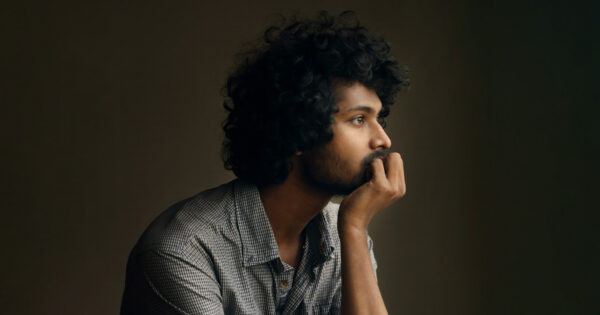Am I Supposed to Stop Thinking?
Three Buddhist teachers answer the question "Are we supposed to stop or transcend thinking altogether, or to find another, more enlightened way to think?" The post Am I Supposed to Stop Thinking? appeared first on Lions Roar.

Keiryu Liên Shutt, Ayya Suddhama, and Doyeon Park answer the question “Are we supposed to stop or transcend thinking altogether, or to find another, more enlightened way to think?”

Photo by Kaziminmizan Mizan.
Question: As Buddhists, we’re told not to get caught in dualistic thinking. Instead, we’re supposed to rest in nonconceptual, open, “don’t know” mind. But thinking and making judgments seems essential to living in the relative world, and to skillfully helping others. Are we supposed to stop or transcend thinking altogether, or to find another, more enlightened way to think?
Keiryu Liên Shutt: I’ve heard it said by Zen teachers that the function of the mind is to secrete thoughts. From that perspective, “to rest in nonconceptual, open, ‘don’t know’ mind” isn’t so much to stop or transcend thinking as to simply let thoughts be “just thoughts” and to know that the mind is doing its thing. Thinking is simply what the mind does, in the same way that ears hear and eyes see.
What we endeavor to stop is not thinking itself but the obsessive energy that gets caught up in the content of the thoughts. We practice to recognize thoughts as just another phenomenon arising. We practice to stop our belief in the solidity of our interpretation of our thoughts—our “story”—and the emotional patterns and judgments that often come with it.
In Buddhism, we learn to see that a thought is just a thought.
One way we can practice to know thoughts as thoughts is to become aware of the patterns in our thinking. What we “transcend” is not thinking itself; rather, it’s our tendency to follow and believe our conditioned patterns of what we think is true or not true, right or wrong. In knowing thoughts to be just thoughts, we let go of all the “post-thoughts,” the long tail of energy created by our habit of clinging to what we think.
Shunryu Suzuki Roshi had a saying about “giving your cow a large, spacious meadow.” He used it as a metaphor for not trying to control other people, but it is also apropos in this context. We can give a thought “a large, spacious meadow” to be as it is. But we only rarely do this. Instead, we keep trying to “do” something with the thought, adding our like or dislike and other associations to it. Rather than just letting the cow be in the field, we believe we have to determine whether it’s a brown cow or a black cow, a male or a female, a big cow or a small cow.
In the West, we’ve been taught, “I think, therefore, I am”; in Buddhism, though, we learn to see that a thought is just a thought. When we can let go of holding on to any story, the cow is free to be just a cow in a field, without any referencing. It’s just you—or me, or us—just sitting.
Ven. Ayya Suddhama: A woman I know in California bought a large tract of forest land about half a mile from the ocean. On her new property, she discovered a spot on a hill that offered a phenomenal view of the distant waves crashing on the shore, so she cleared some trees and built her house there to enjoy the view. Whether or not she had built her home on that spot, the view—the water, coastline, and sky—would still have been there. She didn’t create the view; she simply made it possible for herself to appreciate it.
Nonduality is like this. The words are only an attempt to conceptualize what can’t be described by words: the enlightened state of mind, the deep wisdom beyond conventions. Like that ocean view, this state of mind always exists, whether we are able to experience it or not. Also like that view, if we want to benefit from it, we must be willing to put in the work required. Fortunately for us, the Buddha already found his way there and left behind a kind of trail map and blueprint to help us arrive at the state of mind he discovered and build our lives on that foundation.
He left us a gradual training, one that entails a way of living that brings the mind more into harmony with an enlightened perspective. The noble eightfold path: right (or harmonious or skillful) understanding, right intention, right speech, right action, right livelihood, right effort, right mindfulness, and right concentration. Following this path requires us to engage in some degree of thinking and discernment. Consider this verse from the Dhammapada:
Abstaining from all evil,
Doing what is good,
Purifying one’s mind,
This is the teaching of all buddhas.
If we were supposed to stop thinking and making any judgments, how would we be able to discern good from evil? The Buddha advised that, before performing any action of body, speech, or mind, we should pause to discern whether the action would bring benefit or lead to harm; if the latter, we should abstain. Moreover, the Buddha exhorted us to keep watch for any sign that a seemingly beneficial behavior is in fact harmful, and to cease from any such activity.
In meditation, we can transcend thinking—not all at once and not by willpower, but by skillfully and repeatedly redirecting the mind. So, paradoxically, in order to arrive at that open, relaxed state of mind, one must engage in skillful application of mind rather than a passive open awareness, at least until all negative mental states, including restlessness, have been set aside.
An open “don’t know” attitude can be a great asset for teaching oneself to relax and let go, bringing stillness, peace, and calm. It serves an essential role on the path, but it isn’t a complete path in itself. Just as we require both inhalation and exhalation to live, to develop spiritually, we need both openness and discernment, both energetic effort and letting go. The Buddha likened it to holding a delicate quail: held too loosely it could escape, but held too tightly, it might be crushed. As we grow in maturity on the path, we learn how and when to make effort or to let go.
Doyeon Park: There is a popular saying in Zen Buddhism:
Before one studies Zen, mountains are mountains and waters are waters.
After one gains insight through the teachings of a master, mountains are no longer mountains and waters are no longer waters.
After enlightenment, mountains are once again mountains and waters are waters.
Before we begin dharma practice, we see everything as a fixed and separate entity, as it appears to be; we see mountains as mountains and waters as waters. In this stage, we often put things into one of two categories: good or bad, right or wrong, us or them. This is what we mean by dualistic thinking. Our society often views things the same way, with “my/our side” being good and right, and “your/their” side being evil and wrong. In this dualistic mindset, when there are things we like, craving and attachment arise; when there are things we don’t like, fear and hatred arise. Many dharma teachers emphasize the need to break free of this black-and-white mentality.
Buddhist practice is about bringing more wisdom and compassion into the world, not about denying or neglecting the world we are living in.
As we gain insight from our dharma practice, we begin to see that mountains are no longer mountains and waters are no longer waters. That is, we start to understand that nothing exists on its own; all things exist in relation to all other things. In addition, all things are changing and transient. Without proper reflection and guidance, we can easily fall into the trap of thinking mountains and waters don’t even exist, a grave misunderstanding that can lead us to a point where we don’t care about anything at all. This stage, then, is still an incomplete view. Buddhist practice is about bringing more wisdom and compassion into the world, not about denying or neglecting the world we are living in.
It is during the third stage, when mountains are once again mountains and waters are once again waters, that we truly see things as they are. Though the words are the same, these mountains and waters are worlds apart from those of the first stage. The difference is in the way we see them. We can see the mountains from the first stage as a reference to conventional truth, while the mountains of the second are a reference to ultimate truth. The third mountains are a reference to the middle way, which means not getting caught in either conventional truth or ultimate truth.
In everyday life, in order to take actions that bring love and compassion for the sake of all beings, we need to distinguish between what is wholesome and beneficial, and what is not. It’s been my experience that when I see things through the eyes of the dharma, I find much deeper connection and understanding, and this usually enables me to be more patient, loving, and compassionate.

 Tekef
Tekef 
































